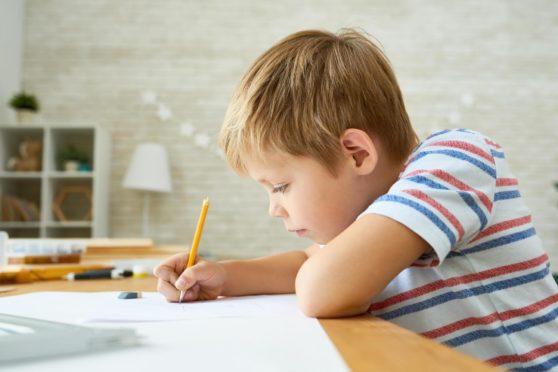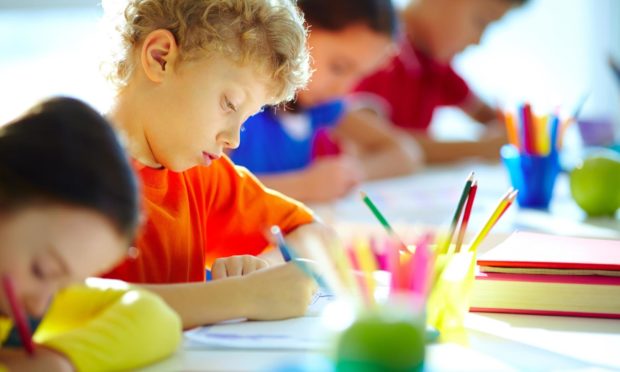Education has been one of the biggest talking points of this year’s Holyrood election campaign.
Voters will go to the polls on May 6 to choose who will represent them as MSPs in the Scottish Parliament.
But here’s how Scotland’s top five political parties – the Scottish National Party, Scottish Conservatives, Labour, Greens and the Liberal Democrats – are promising to tackle education issues such as coronavirus recovery, teaching workload, exams and the attainment gap.
Class sizes and teacher numbers
All five parties agree that more teachers need to be recruited to enable pupils to have one-to-one time to help them catch up on their learning.
Throughout the pandemic, many teachers said they have been working beyond their contracted hours – including weekends.
Recruiting more teachers would mean class sizes could be reduced to around 20 pupils.
However, each party differs on the number of school staff needed across Scotland
- Scottish Greens – 5,500 additional permanent teachers and 2,500 additional support needs staff.
- Scottish Labour – 3,000 teachers over the course of parliament and at least 1,000 specialist teachers
- Liberal Democrats – 3,500 permanent positions
- Scottish Conservatives – 3,000 teachers with a particular focus on STEM subjects
- SNP – 3,500 additional teachers and classroom assistants
Newly qualified teachers have also raised concerns over gaining employment following their probation year.
Scottish Labour and the Liberal Democrats are particularly interested in offering guaranteed jobs for teachers who cannot find permanent employment.
Covid recovery
Each political party has pledged to help children recover from the pandemic by catching up on lost learning and development.
That includes a promise from the SNP to expand on their digital learning roll out by providing every pupil with access to their own device and a free internet connection.
A summer programme of activities will be set up to aid recovery in social skills and allowing children to play and reconnect.
Both Labour and the Liberal Democrats focus on social recovery as the country starts to recover from the pandemic.
The Lib Dems want to invest in grassroots activities and sports by providing facilities with funding entitlement for children and young people to use over the holidays.

Labour’s plan includes a ‘summer comeback’ programme which would provide every young person with free access to sport, transport and culture.
On schooling, a programme of extra supported study for senior pupils would be developed by the Lib Dems.
And the Conservatives would develop a national tutoring programme to provide one-to-one or small group tuition for pupils who need the most help to catch up.
Homework would also be scrapped by the Scottish Greens. The party says it does not lead to greater academic achievement and instead leads many children to develop a negative association with school work.
Attainment and poverty
Each party has pledged to continue offering free school meals to primary pupils.
This is currently offered to all children in P1-P3 and to all other pupils whose parents are in receipt of certain benefits.
All five parties would extend the provision to include all primary school children, however they are also proposing to introduce free school breakfasts to ensure children are not going hungry.
The Greens have also said they want to reduce unnecessary uniform costs, while the SNP would increase the uniform grant to at least £120 for primary school and £150 in secondary school.
Exams
The exams cancellation crisis has caused a storm since they were cancelled for the first time in March 2020.
This has led to debate among parents, teachers and pupils on what method is best to assess learners.
This year, pupils will be graded using teacher estimates and coursework and many will be undertaking alternative assessments.
In their manifestos, each of Scotland’s top five political parties have their say on what the next step is for the governing body the Scottish Qualifications Authority and exams.
The Scottish Greens are in favour of scrapping traditional exams and developing continuous assessments of coursework.
The party says the “high stakes, all-or-nothing” exam model does not adequately assess pupils on their ability to apply the skills they have learned.
The Conservatives, on the other hand, oppose scrapping exams for good. They will support the continued use of exams as the best way to equitably assess pupil achievement.
Labour want to offer pupils to the opportunity to re-sit their exams or assessments, should they need it.
The Liberal Democrats say a reform of the examination body, the Scottish Qualifications Authority, is required to ensure people with recent teaching experience have more say in setting the direction.
Exams are not explicitly mentioned in the SNP manifesto, however the party has promised to take forward the recommendations of the OECD review into the curriculum and assessments.
